Researching the origins of Jewish Ancestry – especially in Western Ukraine – presents the researcher with several vexing historical and cultural stumbling blocks not the least of which is a past unfortunately plagued by a history of virulent ethnocentrism that culminated in the Holocaust and its ensuing diaspora that bore witness to an almost complete eradication of the Jewish population of Galicia along with its culture.
Gone are most Jewish cemeteries, as in Lviv where the 13th century Old Jewish cemetery was eliminated by the Nazis and ultimately replaced by the Krakivsky Crafts Market – its grave markers having been re-purposed as paving stones. A project to commemorate the cemetery – “Besojlem Memorial Park” ” – was developed by the Israeli architect Ronit Lombrozo.
The same can be said of the fate of many synagogues, most pillaged for building materials then abandoned or almost completely destroyed like one of the oldest in Ukraine – The Golden Rose Synagogue in Lviv, while some were repurposed by the Soviets as administrative buildings, concert halls, a college, and even a stable. Plus Jewish archival metrical records in Ukraine are almost completely non-existent, such that finding resources locally in Ukraine for researching Jewish Ancestry is a challenge.
But that’s one among many reasons why we at Ukrainian-Ancestry.com are great at what we do. We find solutions for our clientele.
Plus nowadays there are several online sources for Jewish genealogical data available for the determined Ancestry Researcher, including JewishGen.org, GesherGalicia.org, and FamilySearch.org among others.
Today it’s a changing world, as Elissa Bemporad of Queen’s College and the CUNY Graduate Center writes:
“…the truth is that following the collapse of the Soviet Union, Ukraine has not only become the most democratic state in the post-Soviet landscape outside of the Baltics, it has also inaugurated a new chapter in the Jewish history of the region, reminding us that history evolves and should not always be written through the specter of the violence of the past.”
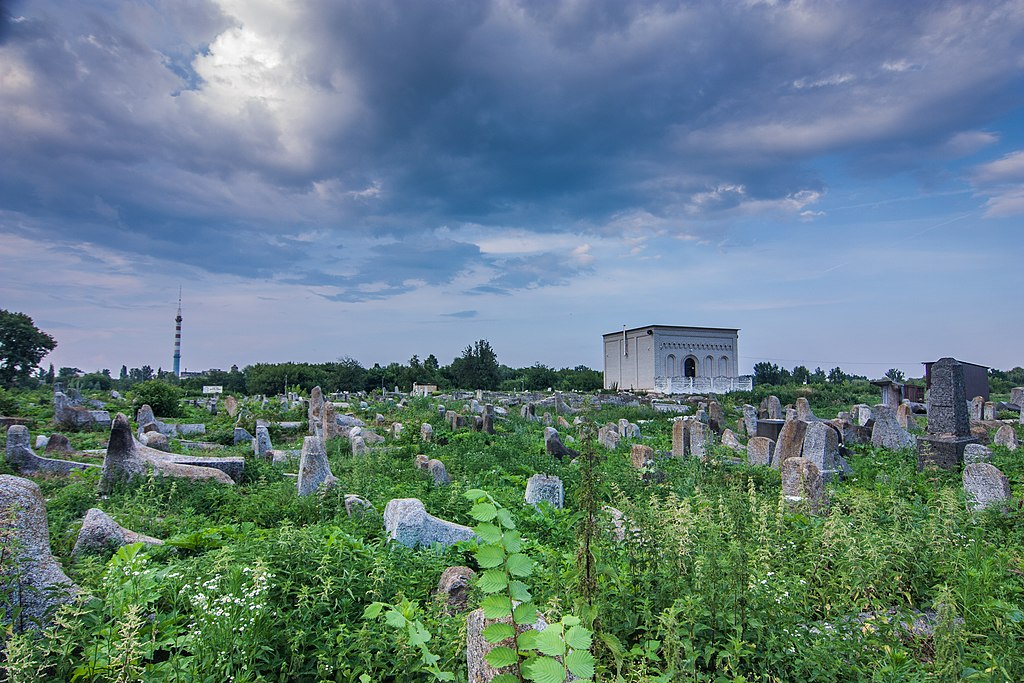
Berdychiv is an historic city in the Zhytomyr Oblast of northern Ukraine. Berdychiv has a rich history dating back to the 2nd millennium BC. The area has seen various cultural influences and political changes over time, including as a significant center of Jewish history, with a large Jewish population and an important role in the development of Hasidism.
According to the census of 1789, Jews constituted 75% of Berdychiv’s population. Jews were a major driving force of the town’s commerce in the first half of the 19th century, founding a number of trading companies and banking establishments. In 1847, 23,000 Jews resided in Berdychiv and by 1861 the number doubled to 46,000. Berdychiv eventually would become the city with the largest share of Jewish population in Ukraine and the Russian Empire.
In the 1920s, the Yiddish language was officially recognized and, beginning in 1924, the city had a Ukrainian court of law that conducted its affairs in Yiddish. But by the 1930’s Soviet authorities had closed most of the town’s synagogues and had suspended all remaining Jewish cultural and educational institutions prior to the start of World War II.
Berdychiv was occupied by the German Army from July 1941 to January 1944. A German SS “extermination” unit was established in Berdychiv in early July 1941, a Jewish ghetto was set up and by the 5th of November 1941 the ghetto was liquidated and all of its inhabitants – close to 40,000 – were murdered. A detailed account of the massacre as told by the narrator’s mother appears in a fictionalized context in Vasily Grossman‘s novel Life and Fate, which is widely available in an English translation by Robert Chandler.
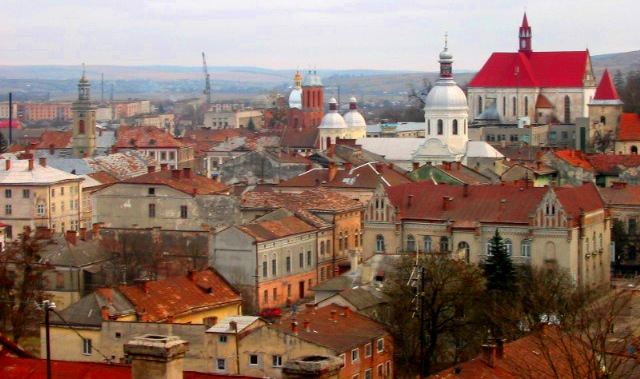
Berezhany. The first written mention of Berezhany dates from 1374, when the village was granted by the Governor of Galicia and Lodomeria Vladislaus II to Ruthenian boyar Vas’ko Teptukhovych. Shortly afterwards, in the 14th century it was made a part of Poland as Brzeżany. The town’s location on the route between Lviv and Terebovlya proved beneficial to the city’s growth and development. It soon started to attract settlers from all over Poland, including a large number of Jews, Ukrainians and Armenians. Although the city remained quite populous, with time it lost much of its importance as a trade centre and became populated primarily by Jews as a typical shtetl.
Before World War II Brzezany’s Jewish population was about 4,000, but after 1939 this population tripled with an additional 8,000 Jews, refugees from eastern German-occupied territories. After the Soviets left in July 1941 (after murdering many Ukrainian civilians), the Ukrainians launched a pogrom, looting, injuring and murdering dozens of the town’s Jews. In December 1941, approximately 1,000 Jews were killed in the Lityatyn forest. On 12 June 1943 the Nazis murdered almost all the Jews from the Brzezany ghetto and work camp at a local cemetery. Only a few escaped.
After the end of World War II, Brzezany was annexed by the Soviet Union, re-named “Berezhany” and attached to the Ukrainian SSR. Since 1991 it has been a part of Ukraine.
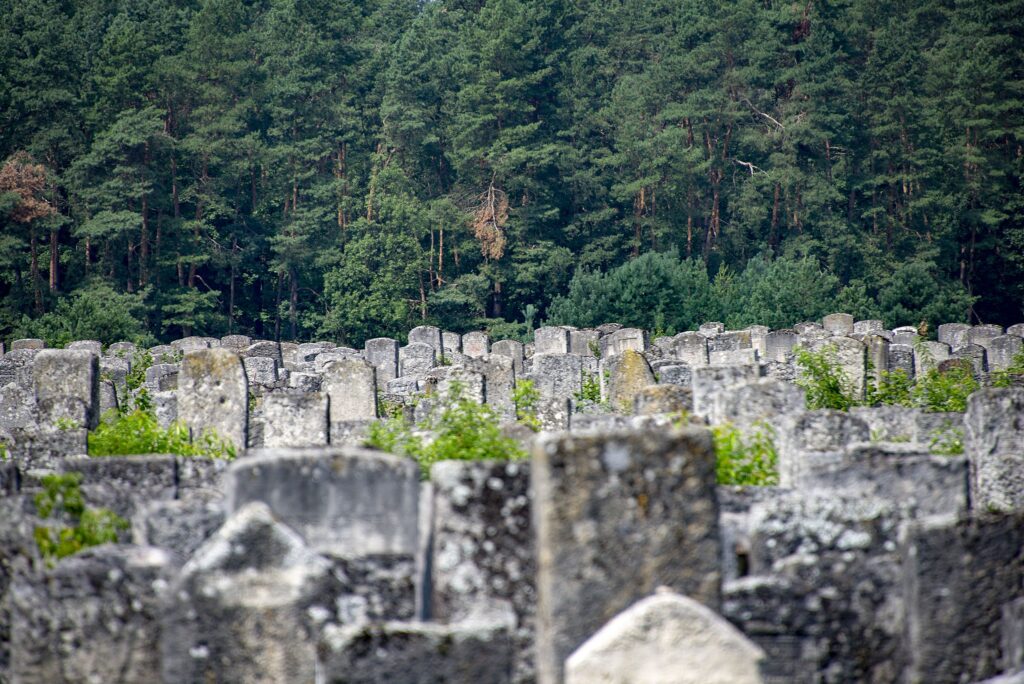
Brody is a city in Lviv Oblast, Ukraine (in Russia until 1772; in Austria, 1772–1919; and in Poland, 1919–39). It is the administrative center of Brody Raion (district), and is located in the valley of the upper Styr River, The ]rst mention of a settlement on the site of Brody is dated 1084 and is believed to have been destroyed by Batu Khan in 1241. From 1441 Brody was the property of different feudal families including the houses of Żółkiewski, Koniecpolski and Potocki.
An organized Jewish community existed in Brody by the end of the 16th century. In 1648 approximately 400 Jewish families are recorded. In 1664 the Jewish community of Brody joined with the communities in Zholkva and Buchach to attain independence from the communal jurisdiction of Lvov [Lviv], which had extended its authority over the outlying communities. For generations a few powerful families controlled the Brody community, among them the Babad, Shatzkes, Perles, Rapaport, Brociner, Bick, Chajes, Rabinowicz, and Bernstein families.
In 1756 there were 7,191 Jews living in Brody; by 1779, 8,867 (over half the total population); in 1826, 16,315 (89%); in 1910, 12,188; and in 1921, 7,202.
There were approximately 10,000 Jews in Brody when World War II broke out. This area came under Soviet occupation following the partition of Poland in 1939. The town fell to the Germans in July 1941, Persecution of the Jews began immediately, and several hundred were murdered by the Nazis and their Ukrainian collaborators. A ghetto was established in January 1942 for the 6,500 remaining Jews of Brody, who were joined later on (in September 1942) by some 3,000 refugees from the neighboring towns and villages.
Mass extermination of the Brody community began with the deportations to Belzec death camp of several thousand Jews in September 1942, followed by several thousand more in November. The ghetto and labor camp for Jews were finally liquidated on May 21, 1943, when the surviving 3,500 Jews were deported to Majdanek . Only around 250 Jews survived the war.
So far as is known no Jewish community was reconstituted in Brody after World War II.
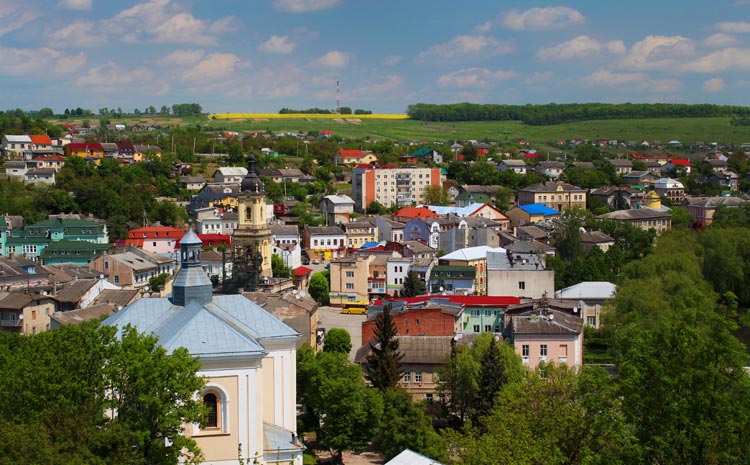
Buchach (Ukrainian: Бучач; Polish: Buczacz) is a city located on the Strypa River (a tributary of the Dniester) in Chortkiv Raion of Ternopil Oblast of Western Ukraine. The city was located in the Polish–Lithuanian Commonwealth until the partitions, followed by the Habsburg monarchy (1772—1804), Austrian empire (1804—1867), Austro-Hungary (1867—1918), West Ukrainian People’s Republic (1918—1919), and Poland (1919—1939).
in 1941, on the eve of the Nazi invasion about 10,000 Jews lived in Buchach. Under Soviet rule (1939–41), Jewish community life suffered and its institutions ceased functioning. All independent political activity was forbidden. After the Nazis invaded Buchach in July of 1941, lasting until the town was successfully “liberated” by the Soviet army 3 years later, all but 100 of the town’s original population of Jewish citizens had been either murdered, deported to Nazi extermination camps, or fled to safer ground. To this day there is no longer a Jewish or Polish community in Buchach.
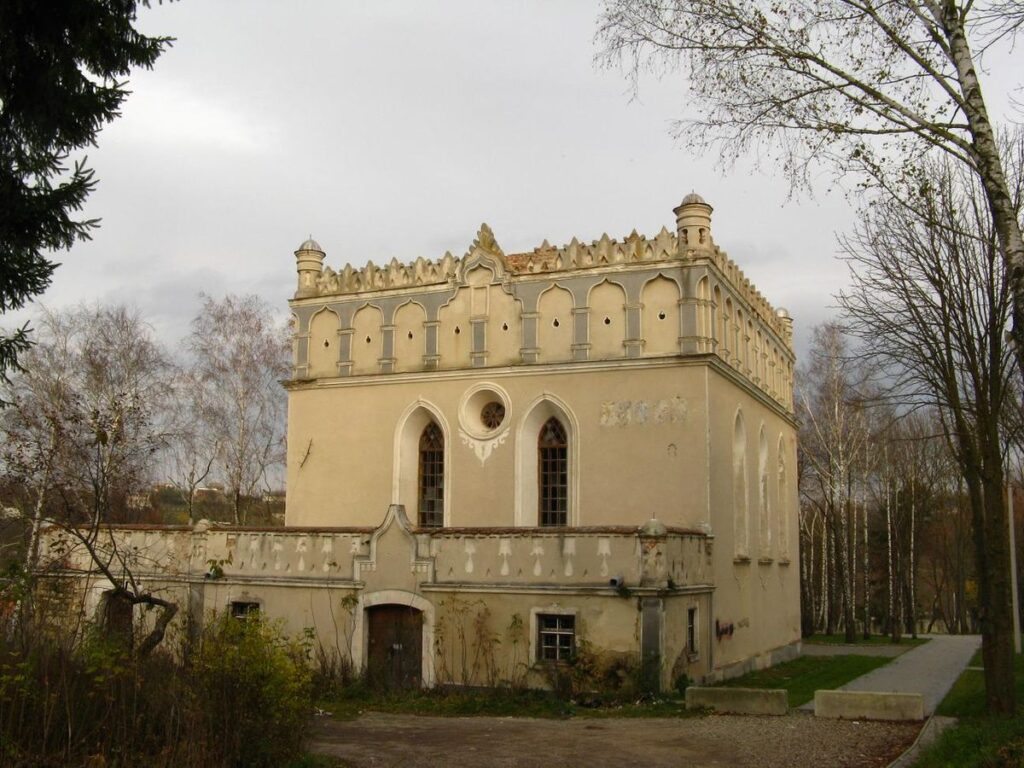
Husiatyń, also called Usiatyn, is a town in Ternopil Oblast divided into two parts by the Zbrucz River. One section was part of the province of Podolia, county of Kamieniec, while the other part was located in Galicia. Husiatyn was established in 1559, initially as the property of the Royal Family of Poland. Its location in a fertile agricultural region led to fast development however, various disputes and wars led to its destruction at several times.
The Western part of the town is built as if on a small half island surrounded on three sides by the Zbrucz River. In the late 18th century with the Austrian occupation and the division of the city, Husiatyn became a center of trade between Galicia and Russia, a status which did well by the Jewish merchants and community. By the second half of the 19th century, the Jews comprised about 70% of Husiatyn’s Galician residents. On the Russian side of the city, however, the Jews were a relative minority.
Husiatyn was home to a large Jewish population prior to the Holocaust, and in particular was a base for an important Hasidic “court” of the Husiatyner dynasty and their Rebbes, that dates back four generations in Husiatyn. The throngs of Hassidic followers who visited the rebbe’s court in Husiatyn also opened up new sources of revenue for the city’s residents, such as hostelries and inns.
With the Russian occupation of Husiatyn at the beginning of the First World War, the city – including the Hassidic court and its edifices – was destroyed. The synagogue was turned into stables and a garage, and the remaining Jews were banished from the city and their property plundered.
With the outbreak of the Second World War the city initially passed into Soviet hands and began to operate under the injuence of communist rule. However following the German occupation in July of 1941, the persecution and murder of the remaining Jewish population became rampant. Throughout the winter of 1942 many of Husiatyn’s Jews died of hunger, cold and disease, and in March 1942 the remaining Jews were transported to the ghettos of Kopyczyńce and Probuzna.
Today, the Husiatyn Synagogue, a rare example of a Fortress synagogue, has been restored as a museum.
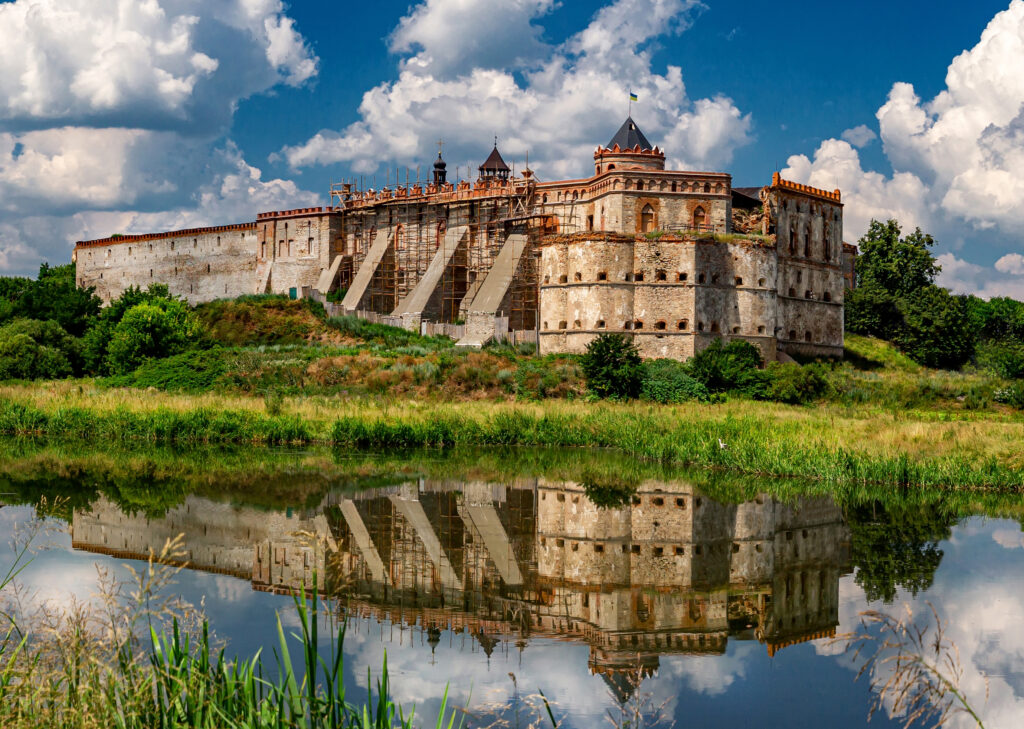
Medzhybizh, previously known as Mezhybozhe, is an urban-type settlement in Khmelnytskyi Oblast of Western Ukraine. It is known as the birthplace of the Jewish Hasidic mystical religious movement.
The founder of Hasidism, Yisroel ben Eliezer made the town his home where he held court from about 1740 until his death in 1760 and is buried there. He came to be known as the Baal Shem Tov (“master [of the] good name” in Hebrew), a name that was given to various Jewish miracle workers in the Middle Ages.
After the 1917 Bolshevik Revolution, the territory was occupied by German and Hungarian troops until the end of World War I. The town changed hands many times as different militia units from either the Bolsheviks, Ukrainian Nationalists, Poles, or Whites gained temporary control. What little wealth was left was stripped in these pogroms, turning the entire area into ruins.
In the early 1930s, pressure from the Soviet government to break the peasant resistance to collectivization resulted in famines throughout Ukraine. Recently a museum dedicated to the memory of the many local inhabitants who died during the Holodomor was opened in Medzhybizh containing original documents from the area relating to the shooting of all villagers who opposed entering the kolhoz collective farms.
Medzhybizh fell to German troops during Operation Barbarossa on July 8, 1941. During the German occupation of the town Nazis set up Jewish ghettos in Medzhybizh and in Letychiv to assist in providing slave labor for road building projects needed as supply routes for the German army. Once these road projects were completed in the summer of 1942, Nazi extermination units were called in and during three separate mass shootings of Jews between 21 August 1942 and 31 October 1942, all Jews in the ghetto were murdered.
Today Medzhybizh is dominated by a castle and fortifications built during the Polish period. A large museum in memory of the victims of the Holodomor is located in the Medzhybizh Fortress and the castle houses a small museum devoted to the Ukrainian history of the town. Several Jewish sites are either being restored or were recently renovated as they have become an important Jewish tourist attraction including the old Jewish Cemetery.
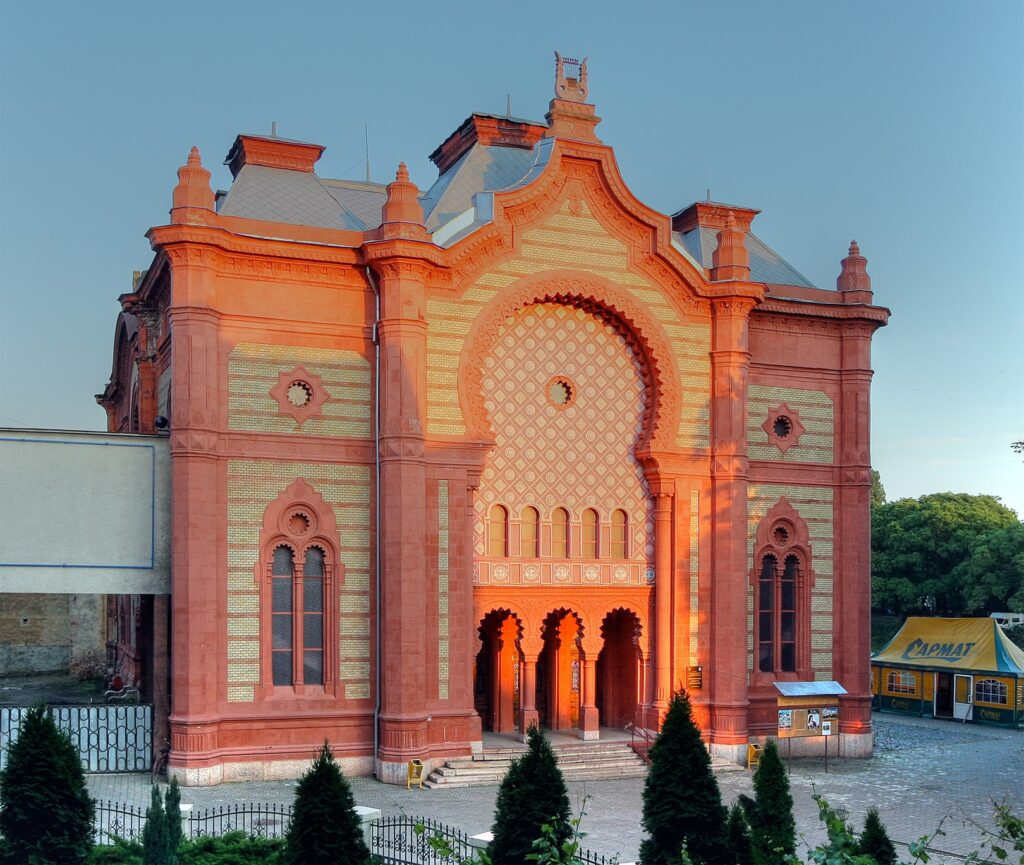
Uzhhorod [Ungvar] Synagogue is located in Uzhhorod, in the present day Zakarpattia Oblast of western Ukraine. The site was completed and dedicated on July 27, 1904. It was then within the Kingdom of Galicia and Lodomeria within the Austro-Hungarian Empire.
The building was designed by the architects Gyula Papp and Ferenc Szabolcs in a flamboyant Romantic style that boldly intermingled Byzantine Revival and Moorish Revival architectural elements making the former synagogue one of the most beautiful in Ukraine.
Since World War II the building has served as Uzhhorod’s concert hall, prized for its acoustics. It has housed the Regional Philharmonic Society with the Transcarpathian Folk Choir.
All Jewish symbols were removed from the building, although as of 2012 there is a plaque on the facade commemorating the 85,000 Jews from Zakarpattia Oblast who were murdered in The Holocaust.
Currently there are plans to restore the synagogue’s glass dome with its mosaics.
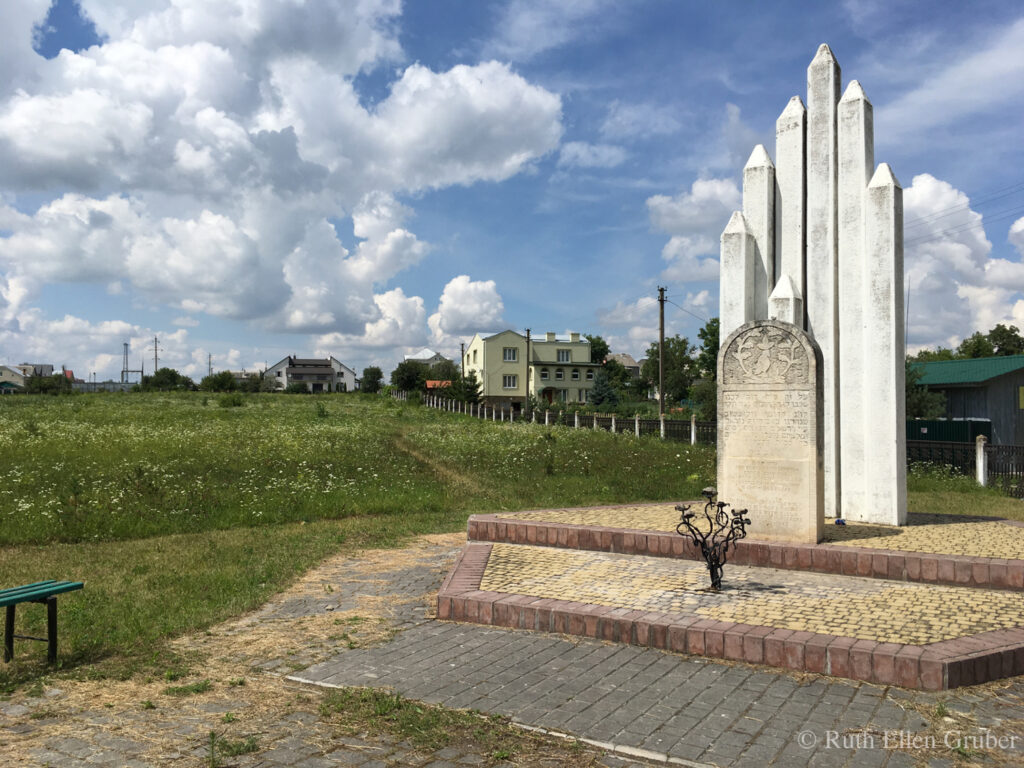
Zolochiv is a small city in the Lviv Oblast of Ukraine, The site was occupied from AD 1180 under the name Radeche until the end of the 13th century when a wooden fort was constructed. This was burned in the 14th century during the invasion of the Crimean Tatars.
In 1442, the city was founded as Zolochiv, by John of Sienna, a Polish nobleman of the Dębno family and subsequently incorporated as a town in 1523 by the Polish king Sigismund I the Old. From the First partition of Poland in 1772 until 1918, the town was part of the Austrian province of Galicia.
In 1918 upon the dissolution of the Austro-Hungarian Empire post World War I, the fate of this province was then disputed between Poland and Soviet Union, until the Peace of Riga in 1921, which ceded all of Galicia to the Second Polish Republic until 1939 when Poland was invaded and Zolochiv [then called Złoczów] was captured by the Soviet Union.
Zolochiv was occupied by the USSR from September 1939 until July 1941 during which time horrific atrocities against Ukrainian nationalists including priest were committed by the NKVD . On 1 July the Germans arrived in the town, amid rumours that had been circulating of a massacre in the Old Polish Prison. Inside the prison cells, Greek-Catholic priests were found with crosses carved into their chests. In one cell a pool of coagulated blood lay with numerous corpses that had been severely tortured. The Germans forced local Jews to clear the prison and clean the bodies of those killed and place them outside of the prison for further identification, after which they too were executed by SS troops,
Once they established their occupation administration, the Nazis began to rob and persecute the Jews, forcing them to do slave labor and confiscating their homes and possessions.On 1 December 1942 a ghetto was established guarded by Jewish police who were sometimes brutal and would beat those within the ghetto. Between 7,500–9,000 people were imprisoned there, as well as remnants of communities of the surrounding areas. The ghetto was liquidated on 2 April 1943, and 6,000 people were murdered in a mass execution perpetrated at a pit near the village of Yelhovitsa.
There are numerous recorded cases of local Ukrainians sheltering Jews within the town of Zolochiv and the surrounding provinces but the number of Jewish survivors is unknown.
If you’ve got any questions, please do not hesitate to call, text or email us. We’re here to help you.
+380 (50) 242 75 54
dborysenko@gmail.com
ancestry@ukrainian-ancestry.com